Training your upper back is a key part of growing and carving your back. Whether you are a gym rat or coming up with your first training plan, the exercises below will help you meet your fitness goals.
upper back stretch
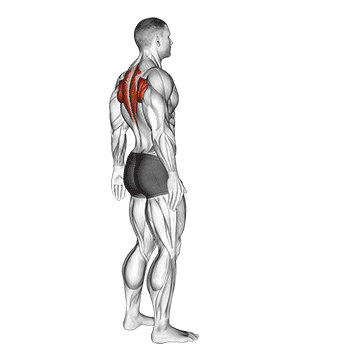
1. Stand up straight with your feet shoulder-width apart.
2. Extend your arms out in front of you at shoulder height.
3. Clasp your hands together, palms facing outwards.
4. Push your hands out as far as you can, rounding your upper back and shoulders.
5. Hold this position for 20-30 seconds, feeling a stretch in your upper back.
6. Relax and return to the starting position.
7. Repeat this exercise 5-10 times, or as recommended by your fitness professional.
Remember to breathe normally throughout the exercise and avoid any jerky movements. This exercise can be done anywhere as it requires no equipment, just your body weight.
suspended row
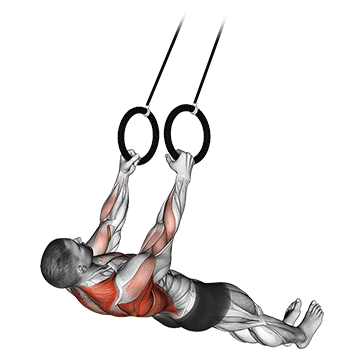
To perform the suspended row exercise, you will need a suspension trainer.
1. Start by adjusting the straps of the suspension trainer to about waist height.
2. Stand facing the anchor point and grab the handles with an overhand grip. Your palms should be facing each other.
3. Walk your feet towards the anchor point until your body is at a slight angle. The closer your feet are to the anchor point, the more challenging the exercise will be.
4. Keep your body straight and rigid, engage your core, and lean back until your arms are fully extended. This is your starting position.
5. Pull your body up towards the handles by squeezing your shoulder blades together and bending your elbows. Your body should remain straight and rigid throughout the movement.
6. Pause at the top of the movement for a second, then slowly lower your body back to the starting position.
7. Repeat for the desired number of repetitions.
Remember to keep your body straight and your core engaged throughout the exercise. Avoid letting your hips sag or your back arch. The movement should be controlled and deliberate, focusing on the squeeze in your upper back muscles.
standing archer
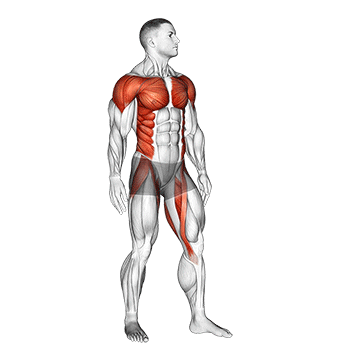
1. Stand up straight with your feet shoulder-width apart. This is your starting position.
2. Extend your arms out in front of you at shoulder height, palms facing each other.
3. Clench your fists as if you're holding a bow and arrow.
4. Pull your right arm back, as if you're drawing the bowstring, while keeping your left arm extended. As you pull back, rotate your torso to the right.
5. Ensure your right elbow is drawn back in line with your shoulder, and you're squeezing your shoulder blades together. This is where you should feel the tension in your upper back.
6. Hold this position for a few seconds, then slowly return to the starting position.
7. Repeat the movement with your left arm, rotating your torso to the left this time.
8. Continue alternating sides for the desired number of repetitions.
Remember to keep your core engaged and your back straight throughout the exercise. This will help to protect your spine and maximize the effectiveness of the exercise.
skin the cat
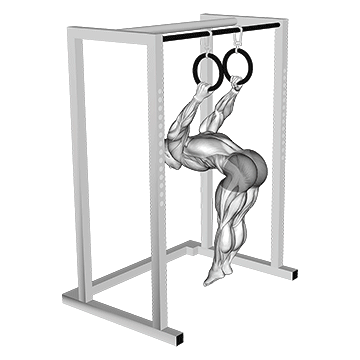
1. Start by finding a sturdy horizontal bar that can support your body weight. Ensure it is high enough so that your feet won't touch the ground when you hang from it.
2. Stand under the bar and reach up to grab it with an overhand grip. Your hands should be slightly wider than shoulder-width apart.
3. Pull your body up towards the bar using your upper back and arm muscles. As you do this, tuck your knees into your chest.
4. Continue to pull yourself up and over the bar, rotating your body so that your feet are now above your head. Your body should be in a tucked position with your knees close to your chest.
5. Slowly extend your legs out in front of you, keeping them as straight as possible. Your body should now be hanging upside down from the bar.
6. Reverse the movement by tucking your knees back into your chest and rotating your body back over the bar. Lower yourself down to the starting position.
7. Repeat the exercise for the desired number of repetitions.
Remember to engage your core throughout the exercise to maintain control and balance. Also, ensure to perform this exercise slowly and with control to avoid injury. If you're a beginner, you might need a spotter or assistance until you get comfortable with the movement.
one arm towel row
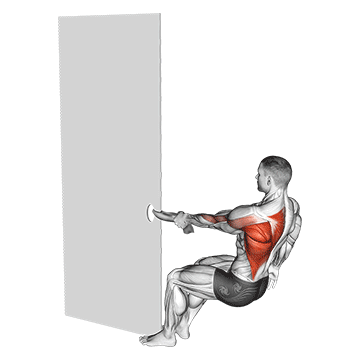
To perform the one arm towel row, you'll need a sturdy towel and a solid vertical object to wrap it around, like a pole or a tree.
1. Start by wrapping the towel around your chosen object at about chest height. Make sure it's secure and won't slip when you pull on it.
2. Stand facing the object with your feet shoulder-width apart. Grab the ends of the towel with one hand, keeping your arm fully extended. Your body should be leaning back slightly, with your weight on your heels.
3. Pull your body towards the object by bending your elbow and pulling the towel towards you. Keep your elbow close to your body as you pull. Your body should remain straight and your core engaged throughout the movement.
4. Once your hand is close to your chest, pause for a moment and squeeze your shoulder blades together to engage your upper back muscles.
5. Slowly extend your arm and return to the starting position. This completes one rep.
6. Perform your desired number of reps on one arm, then switch to the other arm and repeat.
Remember to keep your body straight and your core engaged throughout the exercise. The movement should come from your arm and upper back, not from your hips or lower back.
inverted row with straps
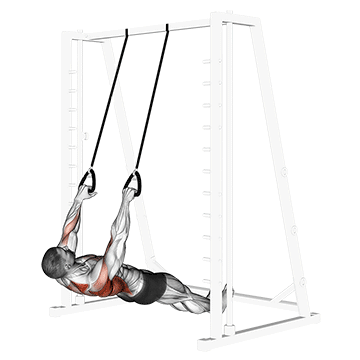
To perform the inverted row with straps, start by securing your straps to a sturdy overhead anchor point. Ensure they are at a height where you can fully extend your arms while lying on your back on the ground.
Position yourself under the straps, lying flat on your back. Reach up and grab the handles with an overhand grip, palms facing each other. Your body should be in a straight line from your ankles to your head.
Pull your shoulder blades back and down, then pull your body up towards the handles by driving your elbows towards the ground. Keep your body straight and avoid sagging your hips.
Pause at the top of the movement, squeezing your shoulder blades together. Then, slowly lower your body back down to the starting position.
Ensure your movements are controlled and steady throughout the exercise. Avoid using momentum to pull yourself up; instead, focus on engaging your upper back muscles.
Repeat for the desired number of repetitions.
Remember to adjust the difficulty of this exercise by moving your feet closer or further from the anchor point. The closer your feet are to the anchor point, the harder the exercise will be.
Always maintain proper form and control during this exercise to avoid injury and maximize effectiveness.
inverted row v. 2
To perform the Inverted Row V. 2, follow these steps:
1. Find a bar that is about waist height. You can use a Smith machine or a bar in a squat rack.
2. Stand facing the bar and grasp it with an overhand grip, hands slightly wider than shoulder-width apart.
3. Walk your feet forward, so you're leaning back. The further forward you walk, the harder the exercise will be. Your body should be straight from head to heels, like a plank.
4. Pull your shoulder blades back and down, then pull your chest up to the bar by squeezing your shoulder blades together. Your body should remain rigid, and you should not swing or use momentum to pull yourself up.
5. Lower yourself back down with control to complete one rep.
6. Repeat for the desired number of repetitions.
Remember to keep your body straight throughout the exercise and avoid sagging at the hips. The focus should be on pulling with your upper back muscles, not your arms.
inverted row on bench
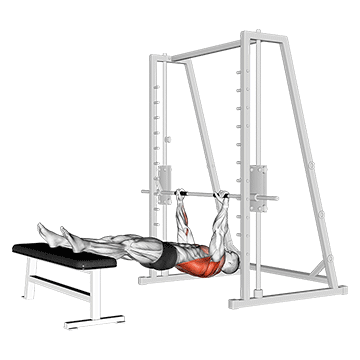
1. Start by positioning a bar in a rack to about waist height. You can also use a smith machine for this exercise.
2. Stand facing the bar and grab it with a wide grip. Palms should be facing towards you.
3. Position yourself under the bar in a hanging position with your body straight, heels on the ground, and arms fully extended. This is your starting position.
4. Begin the movement by squeezing your back muscles and pulling your chest towards the bar. Keep your body straight and avoid swinging or using momentum.
5. Slowly lower yourself back down to the starting position, fully extending your arms and stretching your back muscles.
6. Repeat for the desired number of repetitions.
Remember to keep your body straight throughout the exercise and pull with your back muscles, not your arms. Your hands are just hooks while your back and shoulders do the work.
inverted row bent knees
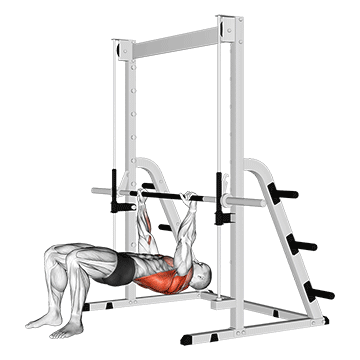
To perform the inverted row with bent knees, follow these steps:
1. Find a bar that is about waist height. You can use a Smith machine or a bar in a squat rack.
2. Stand facing the bar. Reach out and grab it with an overhand grip, hands slightly wider than shoulder-width apart.
3. Walk your feet forward, allowing your body to lean back. Keep your body straight and bend your knees at a 90-degree angle. Your arms should be fully extended, and your body should be at a slight angle, not completely horizontal.
4. Pull your chest up to the bar by squeezing your shoulder blades together. Keep your elbows close to your body and do not let them flare out.
5. Slowly lower your body back down to the starting position, fully extending your arms.
6. Repeat for the desired number of repetitions.
Remember to keep your body straight throughout the exercise and avoid sagging your hips. This exercise primarily targets your upper back, but also works your biceps and shoulders.
inverted row
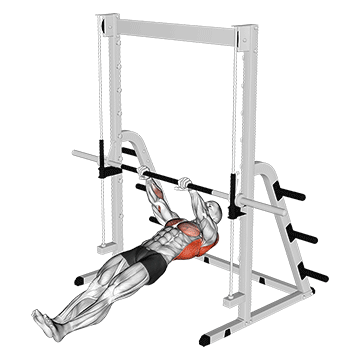
To perform the inverted row, start by finding a bar that's about waist height. You can also use a Smith machine or a bar in a squat rack.
1. Stand facing the bar. Reach out and grab it with an overhand grip, hands slightly wider than shoulder-width apart.
2. Walk your feet forward, so you're leaning back. The further forward you walk, the harder the exercise will be. Your body should be straight from head to heels, like a plank.
3. Pull your shoulder blades back and down, then pull your chest up to the bar. Keep your body straight throughout the movement.
4. Lower yourself back down with control. That's one rep.
5. Aim for 3 sets of 8-12 reps, depending on your strength level.
Remember to keep your body straight throughout the exercise and avoid sagging at the hips. The inverted row primarily targets the muscles in your upper back, but also works your biceps and core.
front lever reps
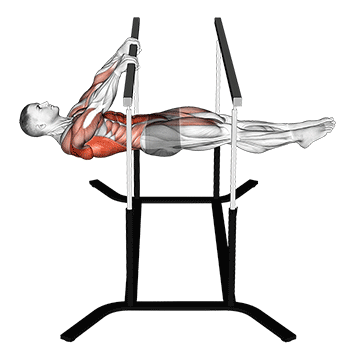
To perform the front lever reps, start by finding a sturdy horizontal bar that can support your body weight.
1. Stand under the bar and reach up to grab it with an overhand grip, hands shoulder-width apart. Ensure your palms are facing away from you.
2. Jump up and pull your body up towards the bar, keeping your body straight and rigid. Your body should be parallel to the ground, resembling a reverse plank.
3. Lower your body back down in a controlled manner until you're hanging from the bar again. This is one rep.
4. Repeat the movement for your desired number of reps.
Remember to keep your body straight throughout the exercise, engaging your upper back, core, and leg muscles. This exercise requires a lot of strength and control, so don't be discouraged if you can't perform many reps at first. With consistent practice, your strength will improve.
elevator
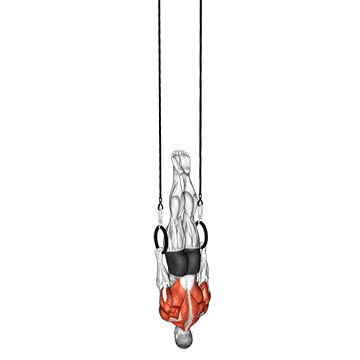
1. Stand upright with your feet shoulder-width apart. This is your starting position.
2. Extend your arms straight out in front of you at shoulder height. Your palms should be facing down.
3. Slowly raise your arms upwards until they are fully extended above your head. Keep your arms straight and close together throughout the movement.
4. Hold this position for a second, then slowly lower your arms back to the starting position. This completes one repetition.
5. Make sure to engage your upper back muscles as you raise and lower your arms.
6. Repeat this exercise for the desired number of repetitions.
Remember to keep your back straight and your core engaged throughout the exercise. Avoid using your neck or shoulders to lift your arms; the movement should come from your upper back. This exercise can be performed standing or sitting, but standing will engage more muscles and provide a more comprehensive workout.
elbow lift - reverse push-up
To perform the Elbow Lift - Reverse Push-Up, follow these steps:
1. Start by lying flat on your stomach on a comfortable, flat surface. Extend your legs straight behind you and position your arms at your sides.
2. Place your palms flat on the floor, fingers pointing forward, and elbows close to your body.
3. Push your body up off the floor using your arms and upper back muscles. Keep your hips and legs on the floor. This is the starting position.
4. Slowly lower your body back down to the floor by bending your elbows. Keep your body straight and avoid any sagging in your lower back.
5. Just before your chest touches the floor, push your body back up to the starting position using your upper back muscles and arms.
6. Repeat this movement for your desired number of repetitions.
Remember to keep your movements slow and controlled, focusing on the contraction of your upper back muscles. Breathe in as you lower your body and breathe out as you push your body back up. This exercise can be modified by placing your knees on the floor if needed.
chin-ups (narrow parallel grip)
To perform chin-ups with a narrow parallel grip, you'll need a chin-up bar or any sturdy bar that can support your body weight.
1. Stand under the chin-up bar. Reach up and grasp the bar with your palms facing towards you in a narrow grip. Your hands should be about shoulder-width apart.
2. Hang from the bar with your arms fully extended. Your body should be straight, and your feet should not touch the ground. This is your starting position.
3. Begin the exercise by pulling your body upwards towards the bar. Keep your elbows close to your body and your back straight. Continue to pull until your chin is above the bar.
4. Hold this position for a moment, squeezing your shoulder blades together to engage your upper back muscles.
5. Slowly lower your body back down to the starting position, ensuring your movements are controlled and not too fast. This completes one repetition.
6. Aim to complete as many repetitions as you can while maintaining proper form.
Remember to breathe in as you lower your body and breathe out as you pull yourself up. Keep your core engaged throughout the exercise to maintain stability.
bodyweight standing row (with towel)
_Back_360.gif)
1. Start by finding a sturdy door in your home that you can use for this exercise. Make sure the door is securely closed and won't open during the exercise.
2. Take a large towel and fold it lengthwise until it's about 4 inches wide.
3. Loop the towel over the top of the door, making sure it's centered. Hold onto each end of the towel, one in each hand.
4. Stand facing the door with your feet hip-width apart. Walk back a few steps until your arms are fully extended in front of you and the towel is taut. This is your starting position.
5. Lean back slightly, keeping your body straight from head to heels. Engage your core to maintain this position throughout the exercise.
6. Pull your body towards the door by bending your elbows and squeezing your shoulder blades together. Your elbows should go past your sides as you pull.
7. Pause for a moment when your chest is close to the door, then slowly extend your arms to return to the starting position.
8. Repeat this movement for your desired number of repetitions.
Remember to keep your body straight and your core engaged throughout the exercise. The only movement should be in your arms and shoulders. This exercise targets your upper back, but you'll also feel it in your arms and shoulders.
bodyweight standing row
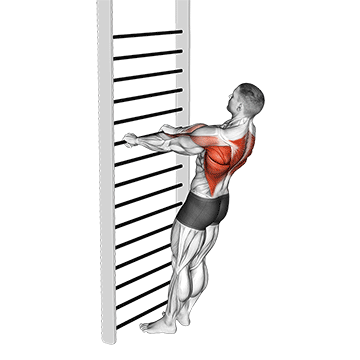
To perform the bodyweight standing row, start by standing upright with your feet shoulder-width apart. Extend your arms out in front of you at shoulder height, palms facing down. This is your starting position.
Now, imagine you are holding a bar. Pull your elbows back, squeezing your shoulder blades together as if you're trying to hold a pencil between them. Keep your elbows close to your body and ensure that your hands come up to your chest.
Hold this position for a second, feeling the contraction in your upper back muscles. Then, slowly extend your arms back out in front of you, returning to the starting position.
Ensure that your back is straight and your core is engaged throughout the exercise. Avoid rounding your shoulders or hunching your back.
Repeat this movement for your desired number of repetitions. This exercise can be performed in sets of 10-15 repetitions, depending on your fitness level.
Remember, the key to this exercise is the squeezing of the shoulder blades, not just the movement of the arms. This will ensure you are effectively targeting your upper back muscles.
No equipment is needed for this exercise as it uses your own body weight for resistance. However, for added difficulty, you can hold light weights in your hands.
bodyweight standing one arm row (with towel)
_Back_360.gif)
To perform the bodyweight standing one arm row using a towel, follow these steps:
1. Stand upright and find a sturdy, immovable object like a pole or a door handle to wrap your towel around. Make sure the towel is long enough to hold onto when you're standing a few feet away.
2. Hold one end of the towel in each hand. Step back until your arms are fully extended and the towel is taut. Your feet should be shoulder-width apart.
3. Lean back slightly, keeping your body straight from your head to your heels. This is your starting position.
4. Pull your body towards the towel using one arm, while the other arm remains stationary. Keep your elbow close to your body as you pull.
5. Squeeze your shoulder blades together at the top of the movement, then slowly return to the starting position.
6. Repeat the movement with the other arm. This completes one rep.
7. Aim for 3 sets of 10-15 reps on each side, or as many as you can manage with good form.
Remember to keep your core engaged and your back straight throughout the exercise. This exercise targets your upper back, but also works your arms and core.
bodyweight standing one arm row
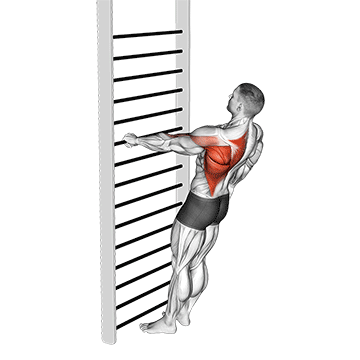
To perform the bodyweight standing one arm row, start by standing upright with your feet shoulder-width apart. Extend one arm out in front of you, keeping it parallel to the ground. This is your starting position.
Now, pull your elbow back as if you were trying to row a boat, squeezing your shoulder blades together. Keep your arm close to your body as you do this. You should feel a contraction in your upper back muscles.
Hold this position for a second, then slowly return your arm to the starting position. This completes one repetition.
Ensure that your body remains stable throughout the exercise, with your core engaged and your back straight. Avoid twisting your torso as you row your arm back.
Repeat this exercise for the desired number of repetitions, then switch to the other arm. This exercise can be performed without any equipment, using just your body weight for resistance.
Remember to breathe in as you extend your arm and breathe out as you pull your elbow back. This exercise is great for strengthening your upper back muscles and improving your posture.
bodyweight standing close-grip row
To perform the bodyweight standing close-grip row, start by standing upright with your feet shoulder-width apart. Extend your arms out in front of you at chest height, with your palms facing each other in a close grip. This is your starting position.
Now, engage your upper back muscles and pull your elbows back towards your body, as if you were trying to squeeze a pencil between your shoulder blades. Keep your elbows close to your body throughout the movement.
Once your elbows are in line with your body, pause for a moment and squeeze your shoulder blades together to engage your upper back muscles even more.
Slowly extend your arms back out in front of you to return to the starting position. This completes one repetition.
Remember to keep your core engaged and your back straight throughout the exercise. Avoid rounding your shoulders or arching your back.
Perform this exercise for the desired number of repetitions. As this is a bodyweight exercise, you can adjust the difficulty by changing the speed of your movements. The slower you go, the harder the exercise will be.
This exercise is great for strengthening your upper back muscles and improving your posture. It can be done anywhere, as it requires no equipment other than your own body weight.
bodyweight standing close-grip one arm row
1. Stand upright with your feet shoulder-width apart. This is your starting position.
2. Extend one arm straight out in front of you at shoulder height. Make sure your palm is facing down.
3. Keep your other arm at your side, relaxed.
4. Engage your core and keep your back straight throughout the exercise.
5. Slowly pull your extended arm back, bending at the elbow, as if you were rowing. Keep your elbow close to your body as you do this.
6. Squeeze your shoulder blades together as you pull your arm back. You should feel a contraction in your upper back.
7. Hold this position for a moment, then slowly extend your arm back to the starting position.
8. Repeat this movement for your desired number of repetitions.
9. Switch arms and repeat the exercise.
Remember to keep your movements slow and controlled, focusing on the muscle contraction and not on the arm movement. This exercise can be done without any equipment, using only your body weight for resistance.
bodyweight squatting row (with towel)
_Back_360.gif)
To perform the bodyweight squatting row using a towel, follow these steps:
1. Stand upright with your feet shoulder-width apart. Hold a towel with both hands, extending your arms straight out in front of you at shoulder height. The towel should be taut between your hands.
2. Begin by performing a squat. Bend your knees and push your hips back as if you're sitting in a chair. Keep your chest up and your back straight. Your thighs should be parallel to the floor.
3. As you squat, pull the towel apart as if you're trying to rip it in half. This engages your upper back muscles. Keep your arms straight and your shoulders down, away from your ears.
4. Hold this position for a few seconds, maintaining the tension in the towel and your upper back muscles.
5. Push through your heels to stand back up, releasing the tension in the towel as you do so.
6. Repeat this exercise for the desired number of repetitions.
Remember to keep your core engaged throughout the exercise to maintain balance and stability. Also, ensure that your knees do not go past your toes when you're in the squat position to avoid injury. This exercise not only targets your upper back but also works your legs, arms, and core, making it a great full-body workout.
bodyweight squatting row
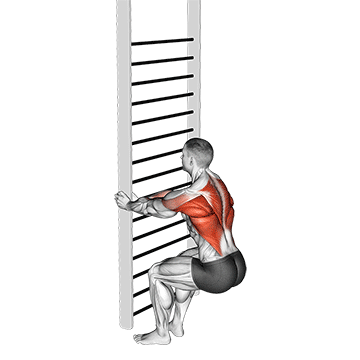
To perform the bodyweight squatting row, start by standing tall with your feet shoulder-width apart. Your toes should be pointing forward or slightly outward. This is your starting position.
Next, lower your body into a squat position by bending your knees and pushing your hips back as if you were sitting on a chair. Keep your chest up and your back straight. Your thighs should be parallel to the floor.
From this squat position, extend your arms out in front of you at shoulder height. Make sure your palms are facing each other. This is the rowing position.
Now, pull your elbows back towards your body as if you were rowing a boat. Squeeze your shoulder blades together at the end of the movement. This is the rowing motion that targets your upper back.
Return your arms to the extended position in front of you, then push through your heels to stand up straight. This completes one repetition.
Repeat this exercise for the desired number of repetitions. Remember to keep your back straight and your core engaged throughout the exercise.
This exercise can be modified to increase or decrease the difficulty. To make it easier, don't squat as low. To make it harder, hold the squat and rowing position for a few seconds before returning to the starting position.
Remember to breathe throughout the exercise. Inhale as you lower into the squat and extend your arms, and exhale as you stand up and pull your elbows back.
The bodyweight squatting row is a great exercise for strengthening your upper back without the need for any equipment. It also works your lower body and core, making it a great full-body exercise.
back lever
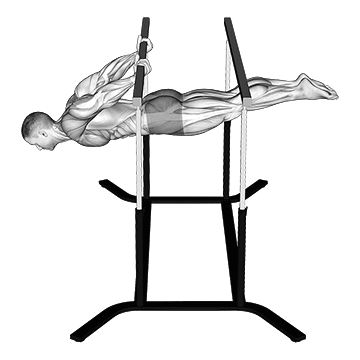
To perform the Back Lever exercise, follow these steps:
1. Find a sturdy horizontal bar that can support your body weight. Ensure it is high enough off the ground to allow your body to hang freely without touching the ground.
2. Start by hanging from the bar with your hands shoulder-width apart, palms facing away from you. This is your starting position.
3. Pull your body up and tuck your knees into your chest. Continue to lift your hips until your body is parallel to the ground, forming a straight line from your shoulders to your knees.
4. Extend your legs out straight behind you, keeping your body parallel to the ground. This is the back lever position.
5. Hold this position for as long as you can, aiming for at least 10-15 seconds. Keep your body tight and straight, and make sure to breathe.
6. To release, tuck your knees back into your chest and lower your body back down to the starting position.
7. Repeat this exercise for the desired number of sets.
Remember, the Back Lever is an advanced bodyweight exercise that requires a significant amount of upper body strength, particularly in the upper back and shoulders. If you're new to this exercise, it's recommended to start with easier progressions or seek the guidance of a fitness professional. Always prioritize form over duration to prevent injury.
No tags for this post.
